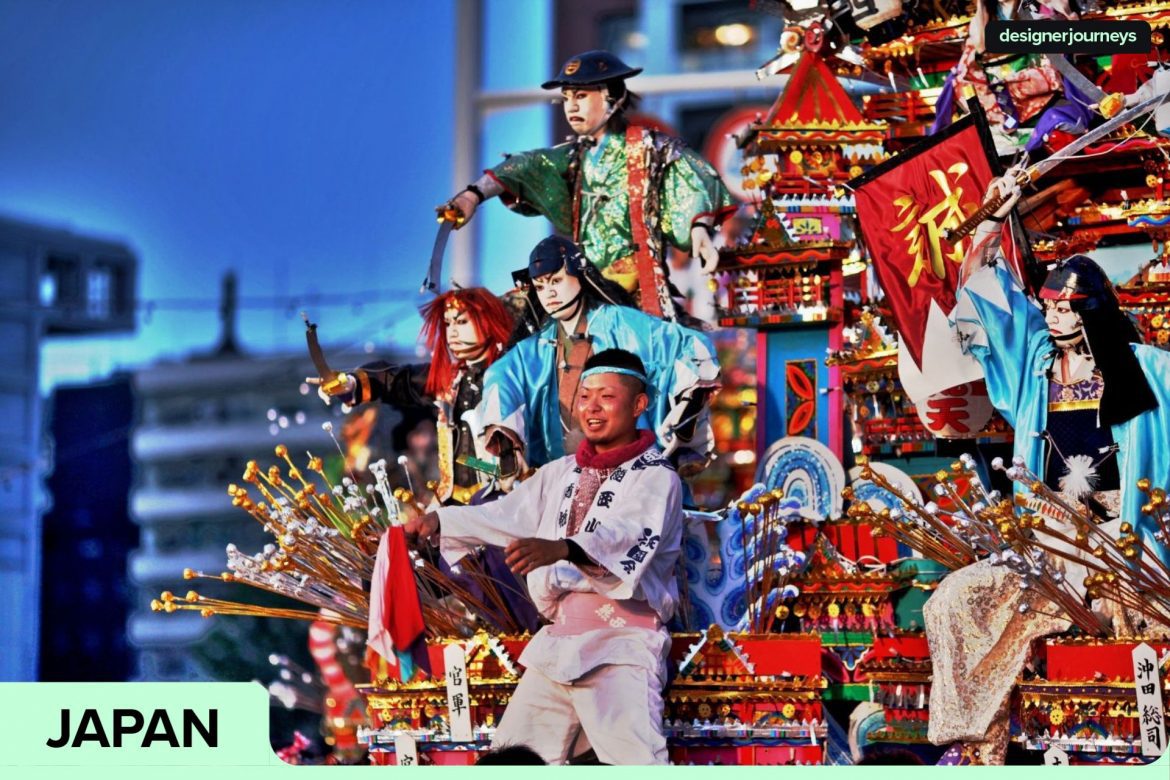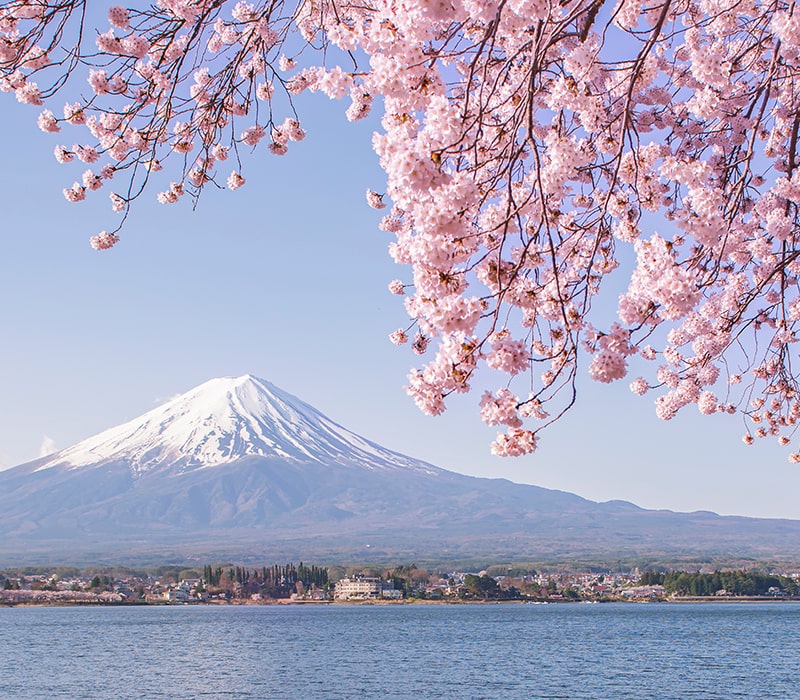Japan, a country steeped in tradition and history, offers a vibrant tapestry of festivals spanning the length and breadth of its islands. Known as ‘matsuri’ in Japanese, these festivals are not just tourist attractions but the heartbeat of Japanese culture, reflecting its people’s spirit, traditions, and unity. From the snow-covered landscapes of Hokkaido to the tropical climes of Okinawa, each festival paints a unique picture of the local customs, history, and community life. Attending these festivals offers a glimpse into the soul of Japan, where ancient rituals meet contemporary life in a colourful explosion of joy and togetherness. So, let’s discover Japan’s top 10 festivals that you absolutely must experience, exclusively on Designer Journeys.
Post Contents
Why Japanese Festivals Are Unmissable
Japanese festivals—matsuri—capture the heart of Japanese character. From cherry blossom festivals beneath blooming cherry trees to summer festivals with dance performances and parades, every event is an invitation to experience the magic of Japan up close. These celebrations are held annually in every city, often centred around shrines or temples, and many festivals date back to the Edo period, carrying ancient legend and community pride into the present.
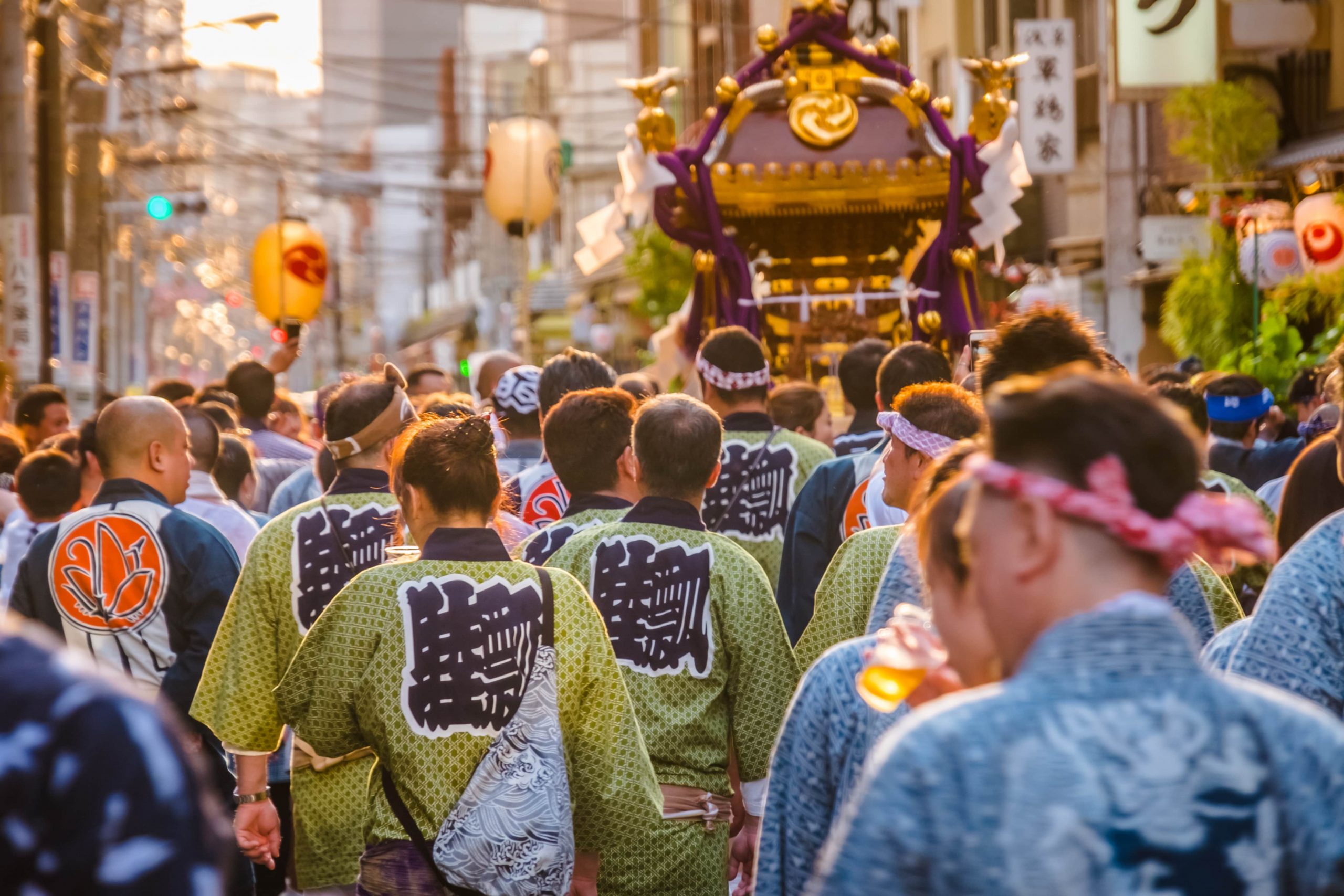
Japanese festivals capture the heart of Japanese character.
Are you planning a trip to Vietnam?
Browse our gallery of fully customisable Vietnam itineraries and connect with one of our expert Local Designers to get you started! Designer Journeys can design your ultimate experience and offers hand-crafted itineraries built by experienced Local Designers who have first-hand knowledge of the destination.
Top 10 Festivals in Japan (2025 Update)
1. Sapporo Snow Festival
Location: Hokkaido
Month: February
What is the Sapporo Snow Festival?
The Sapporo Snow Festival is one of the largest festivals in Japan, held annually every February in Sapporo City. Famous for its gigantic ice sculptures and snow creations, the festival began in 1950 when local students built a few snow statues in Odori Park. Today, the city is transformed with over 200 ice sculptures, live performances, and food stalls offering traditional foods and winter treats.

The festival transforming Sapporo into a winter wonderland.
Key Highlights:
- Held annually in early February, Sapporo, Hokkaido
- World-famous for ice sculptures and illuminated snow displays
- Features live performances, shopping arcades, and pop-up convenience stores
- Fun for families, couples, young people, and seniors
Why Experience It?
This winter festival offers something for everyone. Discover seamless luxury with private tours, warm support, and exclusive experiences—like a gourmet dinner inside a snow dome or a night view of the glowing festival city. Sapporo’s festival is a true celebration of Japanese creativity and community.
Insider Tip: Purchase tickets early for VIP lounges and guided tours to avoid the crowds and enjoy the best views.
More: Sapporo Snow Festival
2. Gion Matsuri
Location: Kyoto
Month: July
What is Gion Matsuri?
Gion Matsuri is Kyoto’s most famous festival, held annually throughout July in central Kyoto. This festival began as a ritual to ward off evil spirits and natural disasters in the 9th century, making it one of the oldest and most deeply rooted cultural events in Japan. The highlight is the grand procession of floats, known as “Yamaboko Junko,” on July 17th. These floats are massive, some are up to 25 meters tall and can weigh as much as 12 tons, beautifully adorned with tapestries from Japan and the world.

Gion Matsuri is one of the most famous festivals in Japan.
Key Highlights:
- July, central Kyoto—floats parade along city streets
- UNESCO-listed festival with centuries of history
- Local area food stalls, traditional clothing, and lively dance performances
- Portable shrines (mikoshi) are carried through the city
Why Experience It?
Uncover Kyoto’s rich traditions in a seamless, crafted journey—imagine viewing the floats from a private balcony, joining locals in traditional yukata, or sampling gourmet festival treats along bustling shopping arcades.
Did you know? Many rituals occur according to the lunar calendar and include the ringing of temple bells.
More: Gion Matsuri
3. Aomori Nebuta Festival
Location: Aomori
Month: August 2-7
What is the Aomori Nebuta Festival?
Held in early August in Japan’s Tohoku region, the Aomori Nebuta Festival is a spectacular summer festival featuring massive, hand-crafted lantern floats inspired by ancient legend and historical figures. Dancers in traditional clothing, known as “haneto,” invite visitors to join the lively parade—making this one of Japan’s most interactive and energetic events.

Nebuta is one of Japan’s most vibrant and energetic festivals.
Key Highlights:
- August 2–7, Aomori city, Tohoku region
- Lantern floats parade through city streets, accompanied by taiko drumming and traditional music
- The festival began as a way to dispel evil spirits at the end of summer
- Includes fireworks and local food stalls
Why Experience It?
Visitors can rent Haneto costumes and join in the parade, making this one of the most interactive festivals in Japan. This festival is perfect for solo travellers, families, and anyone seeking an immersive, crafted experience in Japanese summer festival culture.
Local Insight: The festival’s roots lie in rituals to celebrate good health and drive away bad fortune before autumn.
More: Aomori Nebuta Festival
4. Tanabata Festival
Location: Nationwide, notably Sendai
Month: July/August
What is the Tanabata Festival?
The Tanabata Festival, also known as the Star Festival, is a romantic flower festival inspired by the ancient legend of the star-crossed lovers Orihime and Hikoboshi, separated by the Milky Way and allowed to meet only once a year. Cities across Japan, from Sendai to Tokyo, are decorated with vibrant streamers and paper wishes hung on bamboo, celebrating hope and unity.

Tanabata is a time for people to express their hopes and dreams through written wishes.
Key Highlights:
- Held annually in July (late July/early August in some regions)
- Decorative displays in shopping arcades and streets, especially in Sendai
- Family-friendly events, traditional foods, and dance performances
- Symbolises love, dreams, and togetherness
Why Experience It?
Design your own wish and join in a centuries-old celebration—ideal for those wanting to experience the warmth and imagination of Japanese culture. Enjoy live performances, local delicacies, and luxury accommodations with crafted convenience.
Create: Participate in workshops to learn about the festival’s origins and traditions, guided by local experts.
More: Tanabata
Considering a Trip to the Japanese?
Browse our gallery of customisable Japan itineraries and connect with our Local Designers to get started! Use Designer Journeys to design your ultimate experience and receive hand-crafted trips built by Local Designers.
5. Bon Festival (Obon)
Location: Nationwide
Month: Mid-August
What is the Bon Festival?
The Bon Festival, or Obon, is a spiritual and community celebration held in mid-August, rooted in Buddhist customs honouring ancestors. Marked by bon odori dance performances, floating lanterns, and the ringing of temple bells, Obon brings people of all ages together in a celebration of life, memory, and renewal.
Part of the Obon season, the Awa Odori is one of the largest dance festivals in Japan, taking place in the heat of August in Tokushima Prefecture on the island of Shikoku. It attracts over a million tourists each year who come to see the energetic dance performances known as “Awa Odori,” which translates to “Awa Dance.”

Awa traditional dance.
Key Highlights:
- Mid-August, held annually nationwide
- Rituals occur in homes, temples, and local neighbourhoods
- Dances, traditional music, and ancestral offerings
- Features traditional foods and lantern-lit parades
Why Experience It?
Join the festival’s moving rituals, from lantern-floating on rivers to communal dances in city squares—deeply rooted in Japanese character. It’s a testament to the country’s love for dance and music, making it a must-see for anyone visiting Japan during the summer months.
Insider Tip: For the best experience, visitors are encouraged to observe the dances from designated viewing areas and to participate in the many dance workshops offered during the festival.
More: Bon Festival
6. Tokyo’s Big Three: Kanda, Sanno & Fukagawa Matsuri
Location: Central Tokyo
Month: May – August
What are Tokyo’s Big Three Festivals?
Central Tokyo is home to three of the largest festivals in Japan: Kanda Matsuri, Sanno Matsuri, and Fukagawa Matsuri. Each festival began centuries ago to honour the local area’s shrines, and now fills the city with massive parades, portable shrines, traditional music, and vibrant celebrations.

Kanda Matsuri is one of Tokyo’s three major Shinto festivals.
Key Highlights:
- Kanda Matsuri: Odd-numbered years in May; historic portable shrines and city-wide celebrations
- Sanno Matsuri: Even-numbered years in June; parade to the Imperial Palace
- Fukagawa Matsuri: August; famous for water-splashing parade and lively street events
- All feature traditional clothing, dance, and food stalls
Why Experience It?
Explore these famous festivals with VIP access, seamless transport, and personal guides. Enjoy the spectacle, join the celebrations, and taste local festival foods throughout central Tokyo.
Together: Celebrate with local neighborhoods, experience live performances, and feel the pulse of Japanese summer festivals.
More: Kanda Matsuri | Sanno Matsuri | Fukagawa Matsuri
7. New Year’s Eve & Shogatsu
Location: Nationwide
Month: Late December – Early January
What is New Year’s Eve (Ōmisoka) and Shogatsu?
New Year’s Eve, known as Ōmisoka, and New Year’s Day (Shogatsu), are Japan’s most important annual celebrations. As the lunar calendar turns, temple bells are rung 108 times to purify the spirit and banish evil spirits, while families gather to welcome good fortune.
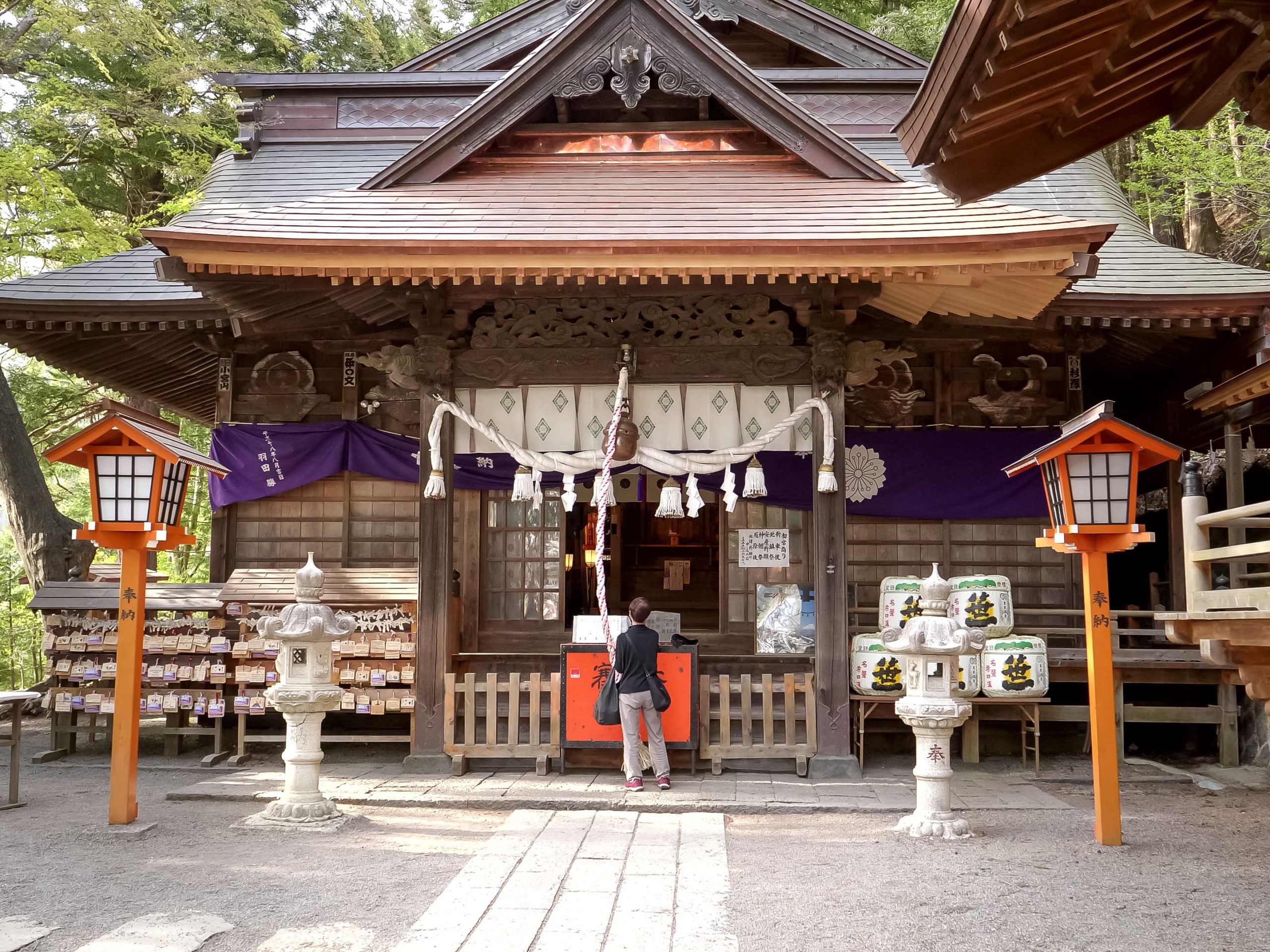
As the lunar calendar turns, temple bells are rung 108 times to purify the spirit and banish evil spirits.
Key Highlights:
- Late December to early January, celebrated nationwide
- Temple bells, ritual shrine visits (hatsumode), and traditional foods
- Streets and convenience stores offer festive treats and gifts
- Community fireworks, live performances, and dragon dance in some local areas
Why Experience It?
Enjoy the serene yet festive atmosphere with the exclusive shrine visits, gourmet meals, and luxury stays for your seamless start to the year. Join locals as they pray for good health and prosperity at the torii gate of a neighbourhood shrine.
Did you know? “Age Day” (Coming of Age Day) is also celebrated in mid-January, with young people donning traditional clothing.
More: Japanese New Year
8. Hakone Daimyo Gyoretsu
Location: Hakone
Month: November 3
What is Hakone Daimyo Gyoretsu?
Held annually on November 3, Hakone Daimyo Gyoretsu is a historical parade recreating samurai warriors, courtesans, and drummers marching along the streets of Hakone—a scenic resort town just outside Tokyo.
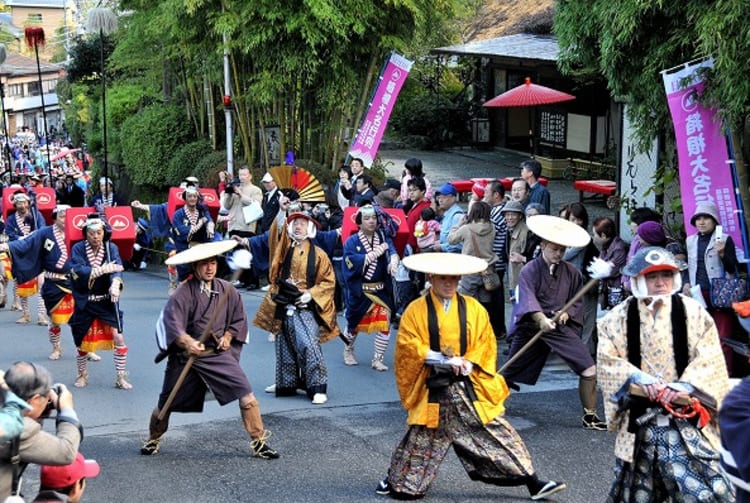
Hakone Daimyo Gyoretsu is a historical parade recreating samurai warriors.
Key Highlights:
- November 3 (Culture Day), Hakone City
- Features actors in Edo-period costumes, dragon dance, and live performances
- Celebrates the area’s heritage and famous hot springs
Why Experience It?
Perfect for families and those seeking cultural immersion, this festival is a crafted journey through time. Imagine a day surrounded by autumn leaves, traditional music, and the pageantry of historical Japan.
Uncover: Designer Journeys provides luxury transfers and personal guides for a seamless, insightful day trip.
More: Hakone Daimyo Gyoretsu
9. Chichibu Night Festival
Location: Saitama Prefecture
Month: December 2-3
What is the Chichibu Night Festival?
This winter celebration, held annually in Saitama, is one of Japan’s most famous float festivals. It was registered as a UNESCO Intangible Cultural Heritage in 2016. The highlight is the parade of illuminated floats through the mountain city’s streets, paired with spectacular fireworks.

Chichibu Night Festival is one of three great float festivals registered as a UNESCO Intangible Cultural Heritage.
Key Highlights:
- December 2–3, Chichibu city (near Tokyo)
- Nighttime float parade, traditional music, food stalls
- Recognised by UNESCO as Intangible Cultural Heritage
Why Experience It?
Discover this unique winter festival with luxury, crowd-free itineraries. Enjoy local foods, the glow of lanterns, and the beauty of Japanese winter, all expertly supported and designed for comfort and inspiration.
Personal: Perfect for couples, seniors, and solo travelers seeking an enchanting, off-the-beaten-path event.
More: Chichibu Night Festival
10. Takayama Matsuri
Location: Takayama
Months: April 14–15 (spring) and October 9–10 (autumn)
What is Takayama Matsuri?
Takayama Matsuri is a spring and autumn annual festival held in the mountain city of Takayama. This famous festival features intricately decorated floats, mechanical puppet shows, and parades through streets lined with cherry trees.
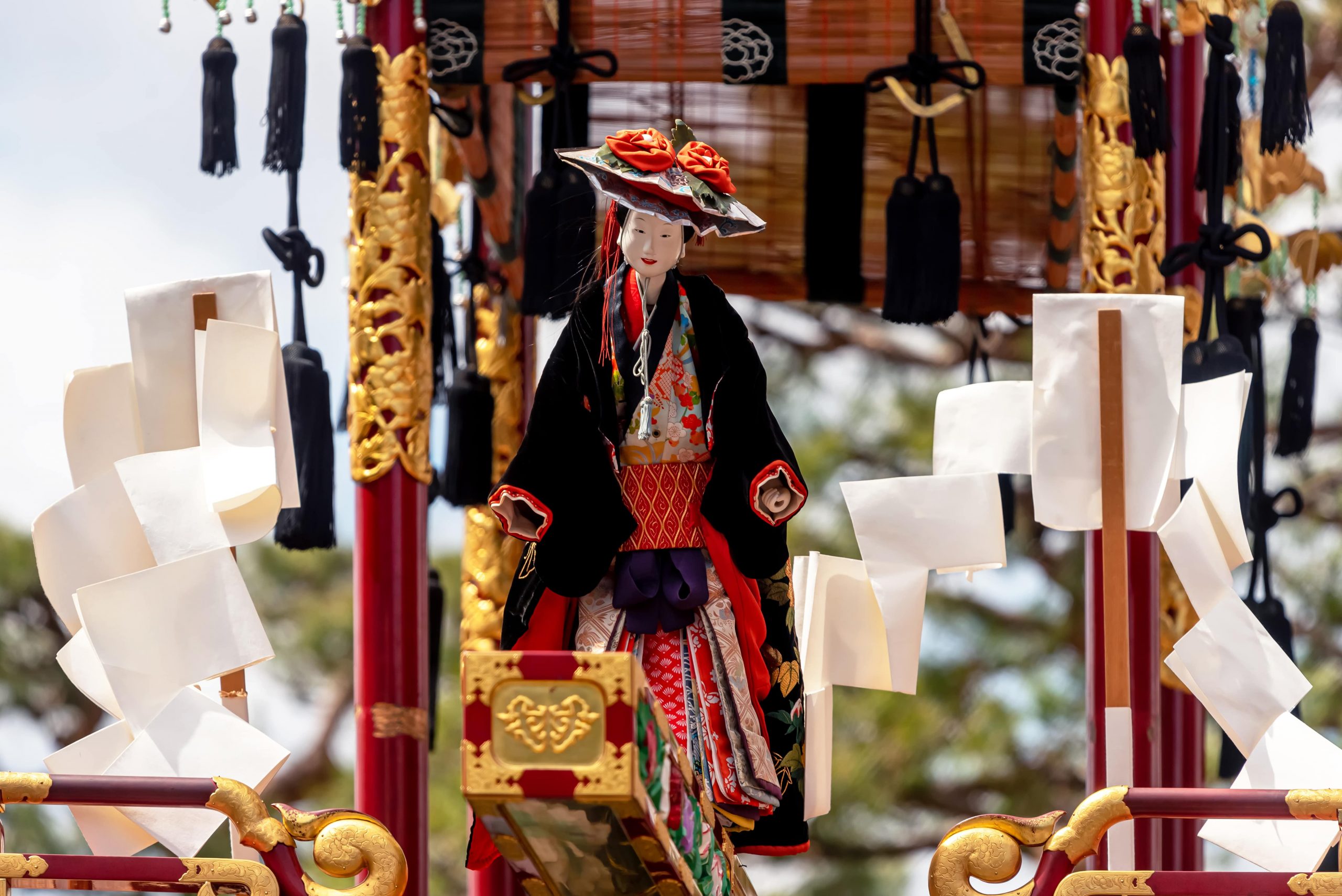
Mechanical marionette on an ornate traditional wooden float during the Takayama Spring Festival.
Key Highlights:
- April (spring) and October (autumn), Takayama, Gifu Prefecture
- Parade of historic floats and puppet performances
- The festival began in the 17th century and honours good harvest and community spirit
- Traditional clothing, shopping arcades, and local foods
Why Experience It?
This festival brings together the elegance of cherry blossom season (late March to early April) and the traditions of Japanese culture. Experience it all with Designer Journeys—exclusive float viewings, local sake tastings, and seamless, crafted support.
Create: Combine your festival trip with a stay in a luxury ryokan for a complete Japanese celebration.
More: Takayama Festival
Festival Comparison
| Festival | Month(s) | Location | Key Experience |
|---|---|---|---|
| Sapporo Snow Festival | February | Sapporo, Hokkaido | Ice sculptures, winter events |
| Gion Matsuri | July | Central Kyoto | Parade, portable shrines, and history |
| Aomori Nebuta Festival | August | Aomori (Tohoku) | Lantern floats, dance, and ancient legend |
| Tanabata Festival | July/August | Nationwide | Star-crossed lovers, flower festival |
| Bon Festival | Mid-August | Nationwide | Dance, rituals, and ancestral celebration |
| Kanda/Sanno/Fukagawa | May–August | Central Tokyo | Parades, portable shrines, music |
| New Year’s Eve & Shogatsu | Dec–Jan | Nationwide | Temple bells, good health rituals |
| Hakone Daimyo Gyoretsu | Nov 3 | Hakone | Samurai parade, Edo period costumes |
| Chichibu Night Festival | Dec 2–3 | Saitama | Night parade, float festival, music |
| Takayama Matsuri | Apr/Oct | Takayama, Gifu | Parade, cherry blossom, puppet shows |
F.A.Qs
What is the main festival of Japan?
Gion Matsuri in central Kyoto is considered Japan’s main festival, held annually in July with grand parades, portable shrines, and centuries-old rituals that define Japanese culture.
What is the most popular event in Japan?
The Sapporo Snow Festival is one of the most popular Japanese festivals, attracting millions with its ice sculptures, food stalls, and winter magic every February.
What are the big three festivals in Tokyo?
Tokyo’s big three festivals are Kanda Matsuri, Sanno Matsuri, and Fukagawa Matsuri. These famous festivals fill central Tokyo with portable shrines, parades, and vibrant summer celebrations.
What are traditional celebrations in Japan?
Traditional celebrations include cherry blossom festivals in spring, Bon Festival in mid-August, New Year’s Eve rituals, and many festivals rooted in local area traditions, ancestral worship, and the lunar calendar.
Don’t Miss Our Exclusive Offers! Subscribe Today!
For the ultimate travel inspiration, local insight straight from our expert Local Designers and exclusive offers you won’t find anywhere else from Designer Journeys, sign up today! Don’t miss out.
Japan’s festivals are a colourful tapestry of culture, tradition, and community. Each event, from the snowy spectacles of the Sapporo Snow Festival to the vibrant dances of Awa Odori, offers a unique window into the heart of Japanese life and history. These festivals not only celebrate the seasons and historical events but also bring people together, fostering a sense of unity and joy. Whether you’re drawn to the quiet beauty of Tanabata Matsuri or the energetic parades of Gion Matsuri, Japan’s festivals are an unforgettable experience, showcasing the country’s rich cultural heritage and the warmth of its people.
